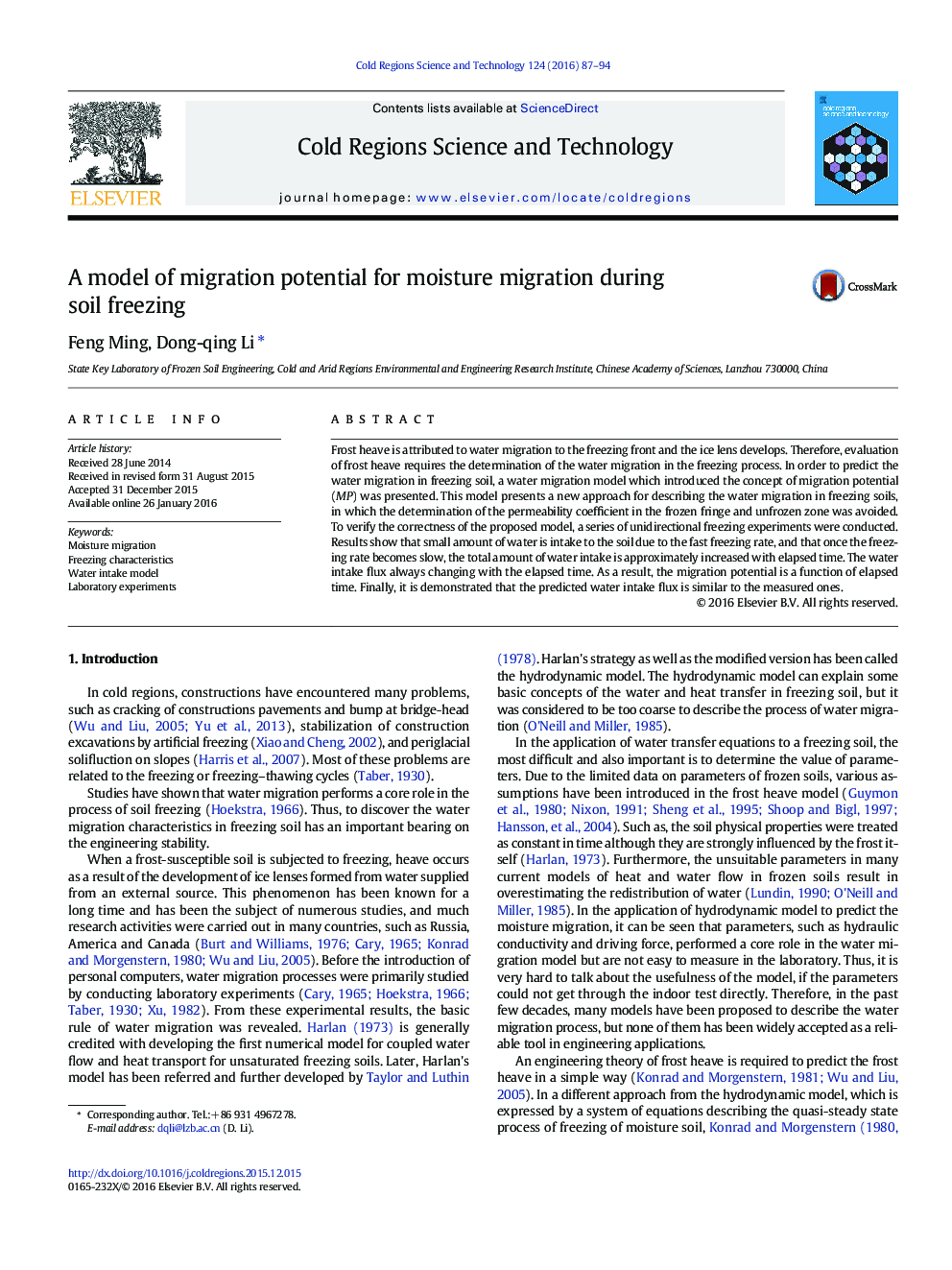| Article ID | Journal | Published Year | Pages | File Type |
|---|---|---|---|---|
| 4675682 | Cold Regions Science and Technology | 2016 | 8 Pages |
•The total amount of water intake is approximately increased with elapsed time.•Water flux is an instable flow due to different freezing rates.•A migration potential was established and verified by experimental results.
Frost heave is attributed to water migration to the freezing front and the ice lens develops. Therefore, evaluation of frost heave requires the determination of the water migration in the freezing process. In order to predict the water migration in freezing soil, a water migration model which introduced the concept of migration potential (MP) was presented. This model presents a new approach for describing the water migration in freezing soils, in which the determination of the permeability coefficient in the frozen fringe and unfrozen zone was avoided. To verify the correctness of the proposed model, a series of unidirectional freezing experiments were conducted. Results show that small amount of water is intake to the soil due to the fast freezing rate, and that once the freezing rate becomes slow, the total amount of water intake is approximately increased with elapsed time. The water intake flux always changing with the elapsed time. As a result, the migration potential is a function of elapsed time. Finally, it is demonstrated that the predicted water intake flux is similar to the measured ones.
